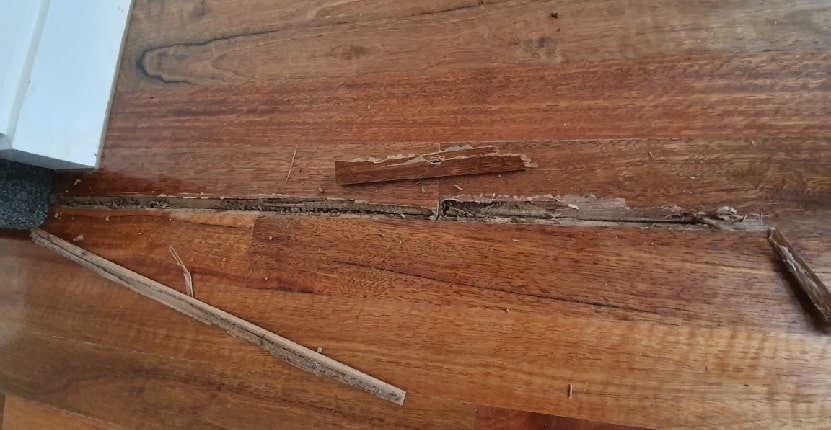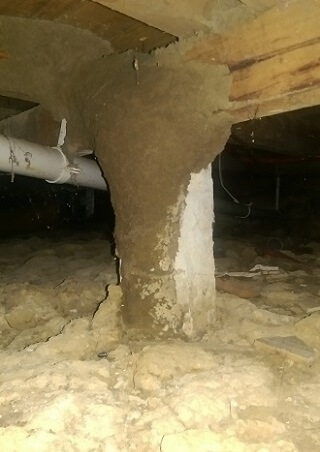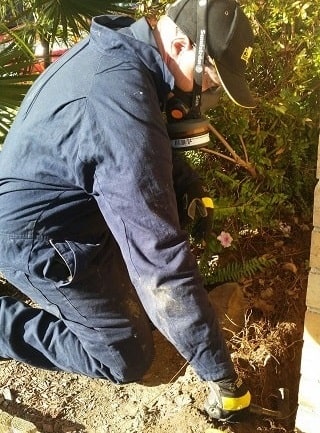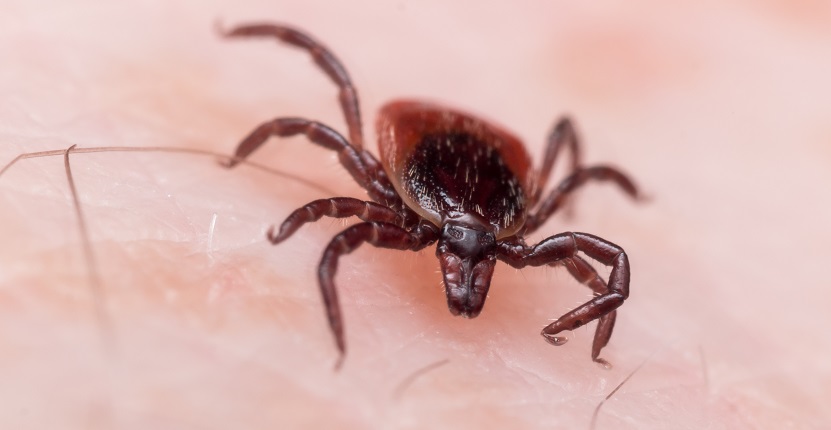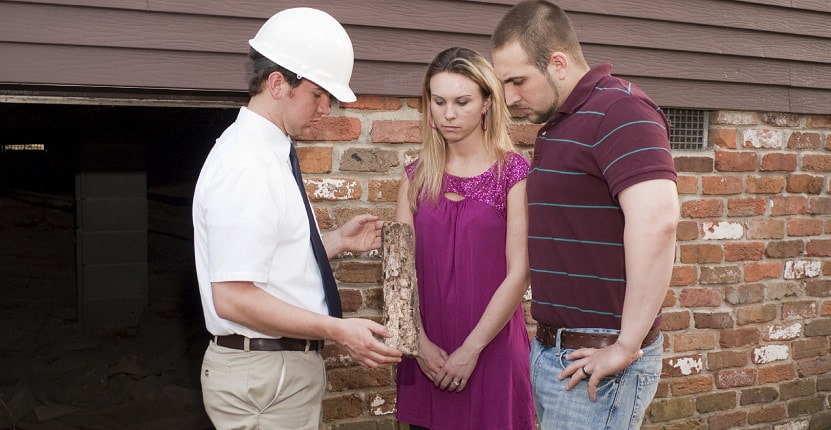Subterranean termites are a significant pest problem in Australia, causing extensive damage to buildings and structures. They live in colonies beneath the soil, often feeding on wood and other cellulose-based materials. If left untreated, they can cause severe structural damage to your property, leading to costly repairs. In this blog, we will explore everything you need to know about subterranean termites, including how to identify them, control and treat them, and the associated costs.
Identification of Subterranean Termites
Subterranean termites are tiny, pale insects, with soft bodies that are sensitive to sunlight. They live in large colonies beneath the soil, building mud tunnels that connect their nests to sources of food, including wood, paper, and other cellulose-based materials. They can cause extensive damage to wooden structures, causing significant structural damage.
Signs of a Subterranean Termite Infestation
Subterranean termites are notorious for their ability to cause significant damage to structures, and it is essential to identify an infestation early to prevent further damage. Here are some signs that you may have an infestation:
- Hollow Sounding Wood: If you suspect that subterranean termites have invaded your property, tapping on wooden surfaces can help you identify the presence of an infestation. When termites consume wood, they leave behind a hollow space, which causes a distinct hollow sound when the wood is tapped.
- Mud Tubes: They build mud tubes to protect themselves from predators and maintain a moist environment. These tubes are usually made from soil and saliva and are typically found along the foundation of buildings, walls, and other structures. They may also be found along pipes and other entry points, as they use these tubes to travel to and from their colony to their food source.
- Damaged Wood: Subterranean termites feed on wood, and their feeding habits can cause significant damage to your structures. If you notice small holes in the surfaces, this could be a sign of subterranean termite infestation. Over time, it may also become soft and weak, and sections may break off easily.
- Swarmers Flying Around: Subterranean termites send out swarmers (winged termites) to establish new colonies. If you see swarms of termites around your property, this could be a sign of an infestation. These swarms typically occur in the spring or early summer and can be confused with flying ants, but termites have straight antennae, and their wings are equal in size.
- Frass: Subterranean termites produce frass, which is a combination of their feces and food particles. This frass can accumulate in piles around wooden surfaces and may be a sign of an infestation.
It is important to note that subterranean termites can be difficult to identify, as they often hide within walls, foundations, and other inaccessible areas. Regular inspections by a licensed pest control professional are the best way to identify and address an infestation.
Common Causes of Subterranean Termite Infestations
They are attracted to moisture and wood, and anything that provides them with these resources can lead to an infestation. Here are some common causes of subterranean termite infestations:
- Moisture: Moisture attracts subterranean termites because it creates a favorable environment for them to thrive. Common sources of moisture include leaky pipes, poor drainage, and damp soil. To prevent infestations, it is essential to address any moisture issues around your property promptly.
- Wood-to-Soil Contact: Subterranean termites need to travel between their colony and their food source. Wood-to-soil contact, such as untreated wood buried in the ground or that is in direct contact with the soil, provides an easy access point for them. To prevent infestations, it is important to eliminate wood-to-soil contact where possible.
- Debris: Subterranean termites are attracted to debris, such as piles of firewood or scrap wood. Removing the debris from around your property can help reduce the risk of an infestation.
- Construction Practices: Inadequate construction practices, such as leaving untreated wood in contact with soil or failing to install proper drainage, can create conditions that attract subterranean termites. It is essential to ensure that proper construction practices are followed when building or renovating structures to prevent infestations.
By addressing the underlying causes of subterranean termite infestations, you can help prevent future infestations and improve the effectiveness of control measures.
Subterranean Termite Control
Subterranean termites can be challenging to control, but there are several methods available to eliminate them. The best method for controlling a subterranean termite infestation depends on the severity of the infestation and the location of the colony. Here are some common methods used to control these pests:
- Chemical Treatments: Chemical treatments involve applying termiticides to the soil around your property. These treatments form a barrier that these pests cannot penetrate, protecting your property from infestation.
- Baiting System: A baiting system involves placing bait stations around a structure to attract these pests. Once these pests feed on the bait, they carry it back to the colony, where it spreads and eventually eliminates the colony. Baiting systems are effective in eliminating entire colonies but may take several months to work.
- Physical Barriers: Physical barriers involve installing physical barriers, such as metal mesh or sand, around a structure to prevent pests from entering. This method is effective in preventing pests from entering a structure but may not eliminate existing colonies.
- Soil Treatment: Soil treatment involves applying a liquid termiticide to the soil around a structure to create a barrier. This method is effective in preventing them from entering a structure, but it may not eliminate an existing infestation.
- Fumigation: Fumigation involves sealing a structure and filling it with a gas that kills pests. This method is effective in eliminating all pests in a structure, but it can be costly and requires vacating the structure for several days.
- Wood Treatment: Wood treatment involves applying a termiticide to wooden structures to prevent them from feeding. This method is effective in preventing future infestations but may not eliminate existing colonies.
It is essential to note that subterranean termite control methods should only be performed by licensed pest control professionals. In addition, it is recommended to conduct regular inspections to detect any signs of pest activity early on.
Based on the information provided, it appears that this section adequately describes the common methods for subterranean termite control. However, it is important to note that each method has its advantages and disadvantages, and the most appropriate method for controlling an infestation may depend on the specific circumstances.
Additionally, it may be beneficial to include information about integrated pest management strategies that incorporate multiple methods to control infestations.
Subterranean Termite Treatment Costs
The cost of subterranean termite treatment depends on several factors, including the severity of the infestation, the size of the property, and the chosen treatment method. Chemical treatments are typically the most expensive, costing anywhere from $2,000 to $5,000, depending on the size of the property. Bait stations are generally less expensive, costing between $800 and $1,500, while physical barriers can cost between $10 and $20 per linear foot.
Preventing Subterranean Termite Infestations
Preventing subterranean termite infestations is key to protecting your property from costly damage. Here are some steps you can take to prevent infestations:
- Eliminate Moisture: Subterranean termites thrive in moist environments, so it is essential to eliminate any sources of moisture around your property. Fix leaky pipes, ensure proper drainage, and maintain gutters to prevent water from accumulating near your property.
- Remove Wood-to-Soil Contact: They use wood-to-soil contact as a bridge to access wooden structures. To prevent infestations, remove any wooden structures that are in contact with soil, such as decks or fences. If you can’t remove them, consider using a physical barrier or treating the wood with a termiticide.
- Store Firewood Properly: Firewood should be stored away from your home and at least 6 inches above the ground. This will help prevent them from using the firewood as a bridge to your home.
- Reduce Wood Debris: Subterranean termites are attracted to wood debris, such as piles of firewood or scrap wood. Remove any wood debris from around your property to reduce the risk of infestations.
- Conduct Regular Inspections: Regular inspections by a licensed pest control professional can help detect pest activity early on and prevent severe infestations. Inspections should be conducted at least once a year, or more frequently in areas with high pest activity.
- Use Treated Wood: Treated wood is impregnated with chemicals that deter insects and other pests. Consider using treated wood for construction projects or when replacing wooden structures around your property.
By taking these steps, you can help prevent subterranean termite infestations and protect your property from damage. It is important to note that prevention is often more effective and less costly than attempting to control an established infestation.
Conclusion
In conclusion, subterranean termites are a serious threat to Australian properties. By identifying the signs of an infestation, implementing effective treatment and control measures, addressing the underlying causes, and taking preventative steps, you can protect your property from costly pest damage. Remember to seek professional help if needed and take action now to ensure a safe and comfortable living space for years to come.

